Australian Outback via Jeep: Retracing the Long Trail of History, 50 Years On
The BFGoodrich 50th Anniversary East-West Australia Jeep Expedition follows in the footsteps—and 4×4 tracks—of overlanding giants.
Thanks to Autoweek.com, I’m reposting an article published recently on the 50th anniversary of the crossing of Australia from east to west. The article was written by Sue Mead for Autoweek.com. If you don’t read the article at least scroll for the fantastic pictures which shows Australia as it really is
“When Ian McDonald and John Eggleston motored from the easternmost to the westernmost points of Australia in 1969 with a small cadre of adventurers in three Jeeps, they knew they would make history. It was the first east-west crossing of the Simpson Desert, and it required traversing 1,100 of the world’s tallest sand dunes across one of the most remote regions of the planet.
What they didn’t know was that their legendary trip would be retraced as a 50th-anniversary run—and they would be on the team that travelled into the heart of the continent’s great red centre with five modern-day Jeep vehicles, once again surviving the rigours of one of the most treacherous and desolate swaths of the earth.
The original expedition, led by McDonald, began after a casual conversation with Willys Motors Australia’s general manager at the time, Guy Campbell. Campbell thought the idea was the perfect way to illustrate the talents of the Brisbane-designed-and-built Jeep CJ-6 Overlander. After the vehicles were prepared in the Willys Brisbane factory, there were two crossings. The first was a shorter “shakedown” run; the second left Byron Bay in July and travelled across the breadth of Australia to Steep Point, taking 40 days. In addition to two Jeep Overlanders was a Jeep J300 owned by photographer Eggleston and a Rokon motorbike for scouting.
The northern swath of the Simpson can experience seasonal temperatures that rise past the century mark in the unrelenting sun. Distances between towns or sheep stations were measured in days or weeks, and few tracks spanned the northern expanse. Those who voyaged into its bowels required the intestinal fortitude of a camel to endure. This was the lure that drew McDonald, Eggleston and their mates to tackle the trek.
Fifty years on, the Simpson is the same. In fact, many things are the same in the Outback and the bush regions of central and western Australia. For the 2019 east-west Australia crossing team, this was precisely the allure.
Among the requirements for this year’s party of like-minded multinational 4WD adventurers were vehicles set up for Overlanding and the extreme ardours of the trip, carrying the right recovery gear, as well as a team of drivers capable at the wheel and experienced in the severities of Outback and backcountry travel. The expedition leaders spent nearly a year planning the logistics to retrace the 3,728-mile-long route (or 6,000 kilometres, if you prefer) that would be without services and support in the desert and other locales where fuel, preservation of the Jeeps, water, food and gear were critical elements to the team’s survival and success. It took the group 15 days to complete the journey.
Capable four-wheel-drive vehicles were a critical ingredient when it came to ensuring success. Jeeps from different eras were the go-to, including Wrangler TJs, JKs and the new Jeep JL four-door; they were prepared at JeepKonection, in Victoria, Australia, and outfitted with BFGoodrich KM3 mud-terrain tires, Warn Zeon winches, TeraFlex suspensions, Long Range Automotive fuel tanks and products from Bestop, Factor 55, J.W. Speaker lighting, Maxtrax, Offroad Animal, Spydura recovery rope and Darche outdoor gear.
Vaughn Becker, of Queensland, Australia, had the dream to bring the legendary trip to life for its 50th anniversary. A life-long Jeeper, Becker was fascinated with the original trip and reached out to the three surviving team members and others, including Ben Davidson, editor-in-chief of Jeep Action and a member of SEMA’s Media Award Judging Committee. Davidson pulled in American Chris Collard, of Adventure Architects, who is well-known as an international 4WD adventurer, journalist and photographer and an inductee into the Off-Road Motorsports Hall of Fame.
U.S. 4WD experts Rick Péwé of JP magazine and your author, freelancer Sue Mead—along with Justin He, of China, and Canadian cinematographer Derek Redmond—joined the team as journalists, while Alan and Karen McMullen, of Victoria, added their 2009 Jeep JK-8 and four-wheel-drive talents to the group. The McMullens are well-known off-road competitors in Australia, have participated in international expeditions and have owned a Jeep aftermarket accessory business. All told, the international contingent comprised adventurers from four countries.
Starting at the Pacific Ocean near Byron Bay, New South Wales, the most easterly point on the continent, the off-road squad turned its wheels toward Steep Point, the most westerly point, retracing the original route through the Outback enclaves from Birdsville to Alice Springs, and visiting the iconic landmarks of Uluru (Ayers Rock) and Kata Tjuta (the Olgas), Finke Gorge National Park and through the remote lands of western Australia. Few roads punctuate its expanses and provide access to its dramatic landscapes.
The northern Simpson Desert claims the world’s largest collection of north-south facing dunes. These aboriginal lands have been closed to the public for decades, but the team worked closely with the governing agencies and was granted special permission to pass.
Here, camel tracks dot the ridges of red sand, along with the zigzagging and squiggling tracks of numerous small desert bugs and rodents such as the tiny nocturnal mulgara mice, the spinifex hopping mice and sand sliding skinks. Australia has a lengthy list of poisonous spiders and close to 100 venomous snakes—although it’s said that only 12 are likely to inflict a wound that could kill you.
After six days in the desert, the team descended the final ridge that led to Old Andado Station, a remote cattle station and historic homestead in the Alice Springs region. From the Wild West town of Alice Springs, the team travelled south and then west across the Tropic of Capricorn to the aboriginal ceremonial site of Uluru.
Nine team members completed the remaining 1,800 or so miles motoring through the bush and the Outback, along stretches of wide dirt track, as well as some paved roads. Here, camels appeared on the roadside; kangaroos, free-range cattle and wombats made driving a treacherous affair. Evidence of accidents is frequent along the roadways.
Two rigours created the greatest challenges in the desert: First, as the sand warmed in the heat of the day and became softer than in the cold mornings, it made ascending the dunes more difficult; and second, the plethora of spinifex, a spiny-leaved tussock-forming grass that proliferates in the desert, required that the Jeeps travel at slow speeds and often affected the best tracks for dune crossings. As a result, it was not uncommon to put the winches, tow straps and Maxtrax to use when vehicles became stuck.
In total, the trip logged 7,456 miles of motoring the Jeep vehicles from their launch and prep location, in Melbourne, to the start at Byron Bay and back to Melbourne, after the finish at Steep Point. The journey’s end at Steep Point was celebrated with airing down our BFGoodrich tires for a final time to accommodate the sandy tracks that led to a rocky promontory along the Indian Ocean—and the end of the road.

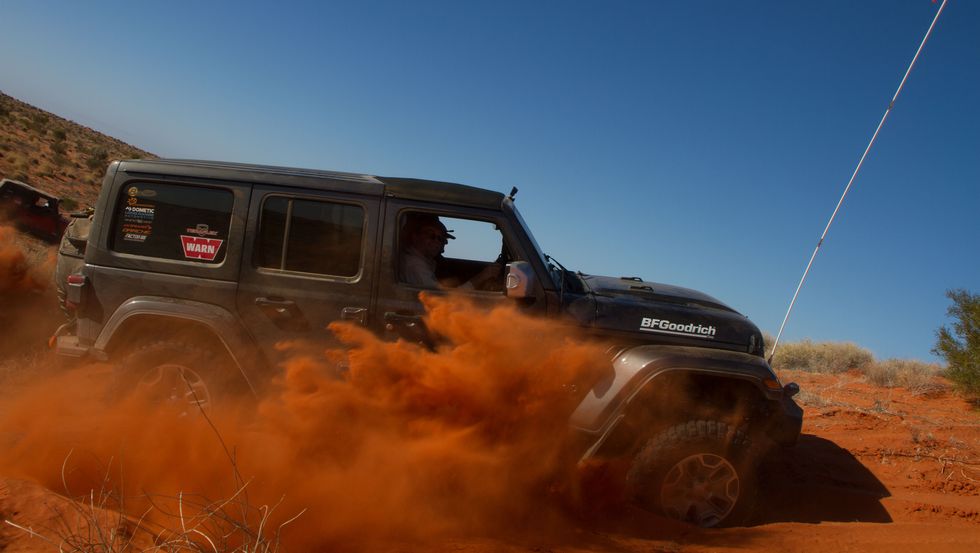
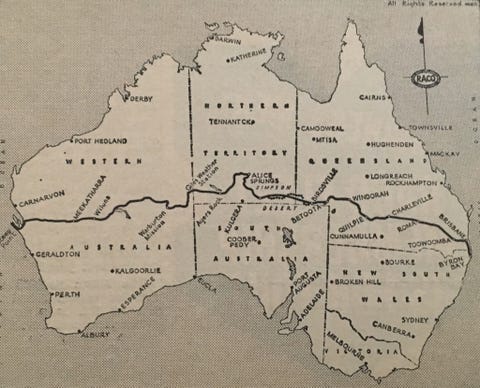

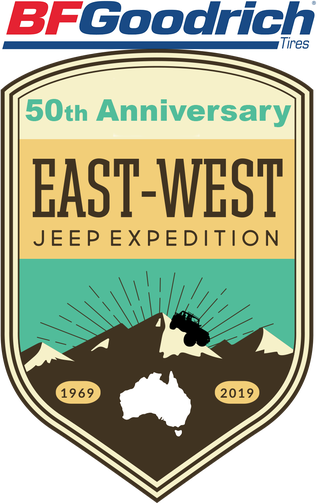
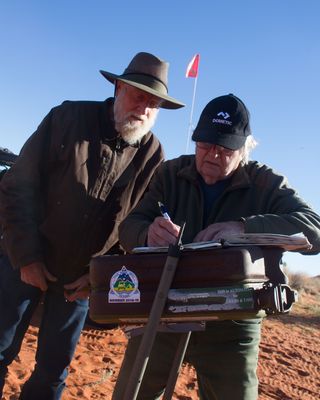
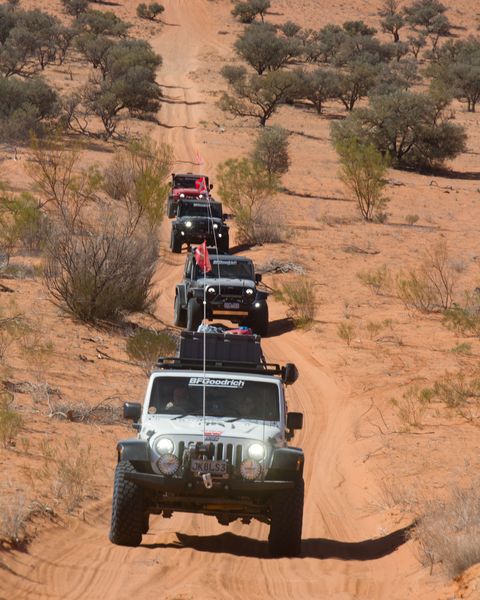
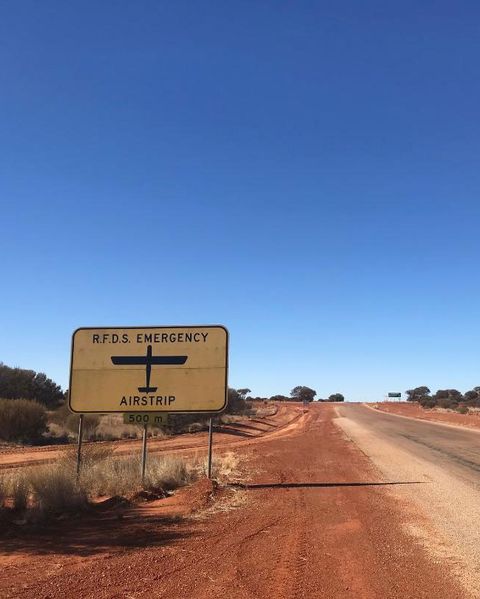
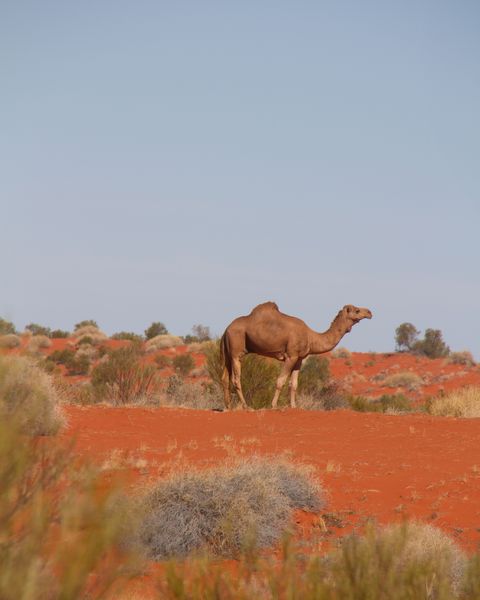

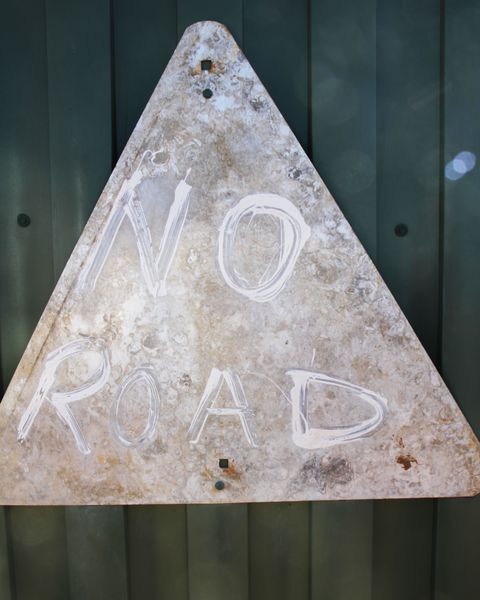
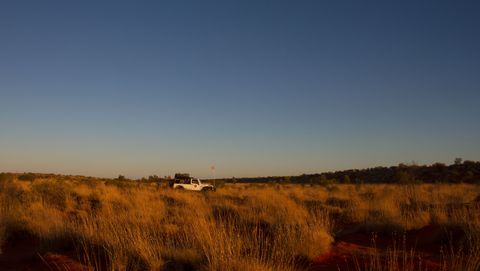

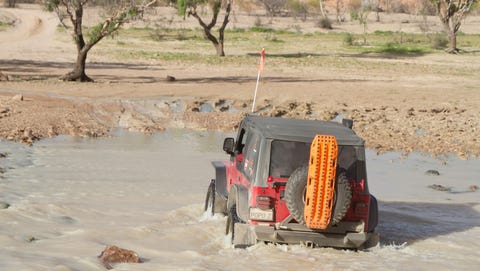


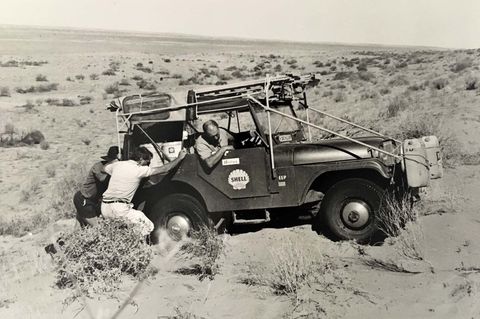

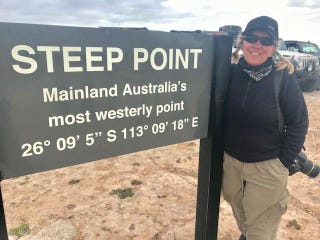
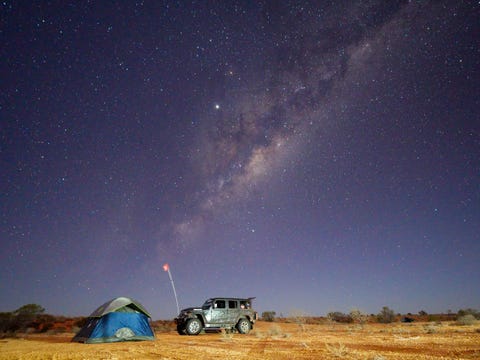

i have a 1970 jeep with a falcon log motor 4 gear sticks hub caps same still goes.neville 0n 0749951229